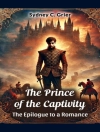In ‘Richard Coeur de Lion and Blondel, ‘ Charlotte Brontë explores themes of chivalry, heroism, and the interplay of personal sacrifice against the backdrop of historical events. This fascinating narrative, articulated through her signature use of lyrical prose and vivid characterization, immerses readers in the world of medieval England. Brontë deftly intertwines fact and fiction, presenting Richard the Lionheart not merely as a monarch but as an emblem of nobility, juxtaposed with the loyalty of his troubadour, Blondel. The literary style demonstrates Brontë’s adeptness in weaving psychological depth into her characters while employing an evocative atmosphere that reflects the tumultuous nature of the times. Charlotte Brontë, renowned for her pioneering contributions to English literature, draws upon her own experiences and cultural heritage in this work. Her familiarity with themes of struggle, loyalty, and the exploration of human emotions may stem from her life in the Yorkshire moors and her literary milieu, which celebrated strong, complex characters. The tension between personal desires and societal expectations deeply informs her narrative voice, reflecting her life as a woman in a patriarchal society. This book is a compelling read for those who appreciate historical fiction infused with emotional resonance and intricate character dynamics. Brontë’s storytelling offers insights into loyalty, courage, and the complex fabric of human relationships. Readers seeking an exploration of medieval history through a literary lens will find ‘Richard Coeur de Lion and Blondel’ both enriching and thought-provoking.
Circa l’autore
Charlotte Brontë (1816-1855), a towering figure in the Victorian literary landscape, is renowned for her contribution to English literature as a novelist and poet. Born in Thornton, West Yorkshire, Brontë was the third of the six Brontë children. Along with her sisters Emily and Anne, Charlotte was part of a sibling trio that left a formidable mark on English fiction. While ‘Richard Coeur de Lion and Blondel’ is not among Brontë’s acclaimed works, her most notable novels include ‘Jane Eyre’ (1847), ‘Shirley’ (1849), and ‘Villette’ (1853). These publications have cemented her reputation as a master of prose, who not only challenged the social norms of her time but also provided intricate psychological portraits of her characters, particularly strong-willed women. Brontë’s writing style is marked by its sophisticated narrative structure, richly evocative descriptions, and the passionate expression of her protagonists’ inner lives. She was adept at using first-person narratives to draw readers into the intimate thoughts and feelings of her characters, thereby forging a deep connection with her audience. Brontë’s works continue to be celebrated for their originality, emotional depth, and bold treatment of themes such as love, morality, and social criticism.












